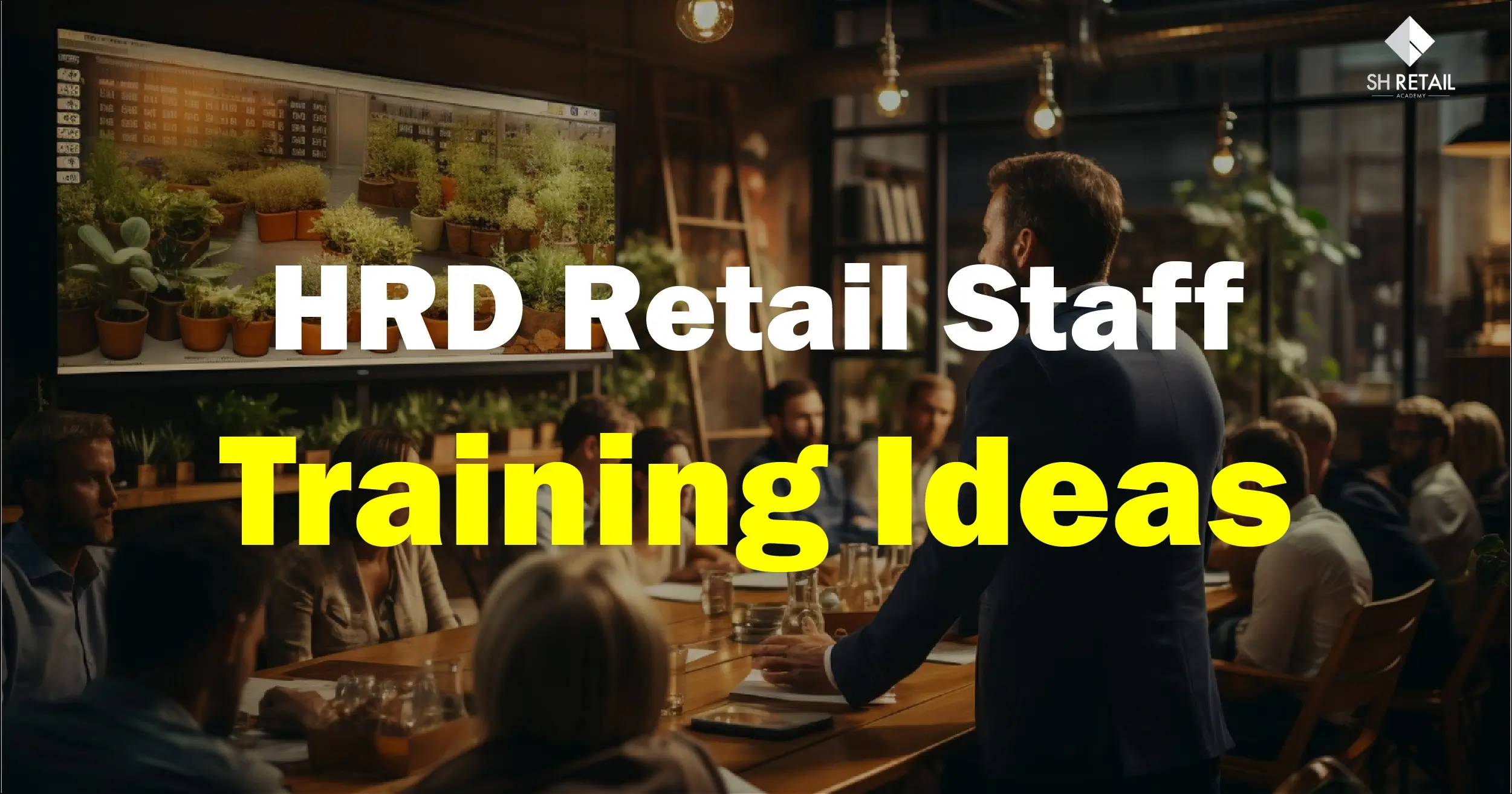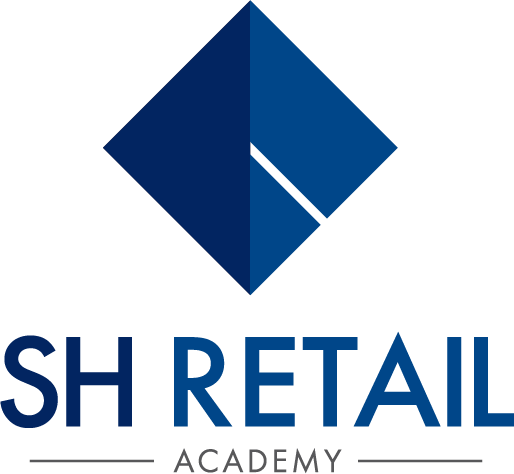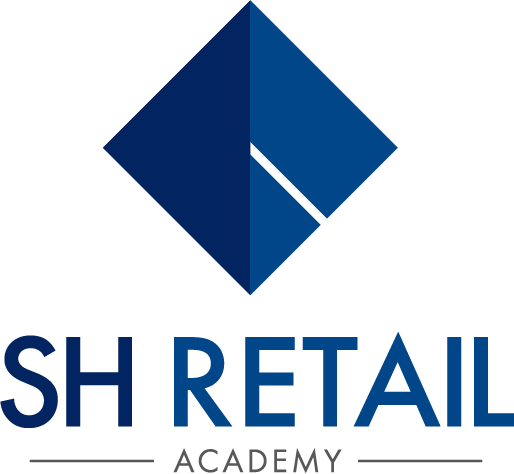
29 May HRD Retail Staff Training Ideas
In today’s competitive retail landscape, the difference between a loyal customer and a one-time visitor often comes down to one key factor: your staff. Engaged and well-trained employees are the secret weapon of retail success. They can transform customer interactions, boost product knowledge, and create a welcoming atmosphere that keeps shoppers coming back for more.

Why Invest in Retail Staff HRDF Claimable Training?
Investing in HRDF Claimable training for retail staff is not just about fulfilling a requirement; it’s a strategic move that can significantly enhance your business operations and overall success. Here are some key benefits of this investment:
- Enhanced Customer Service: Well-trained staff are equipped to provide exceptional customer service. They can effectively address customer inquiries, recommend the most suitable products, and build strong rapport with customers. This personalized service leads to happier customers, increased loyalty, and ultimately, higher sales. Satisfied customers are more likely to return and recommend your business to others, creating a ripple effect that drives long-term success.
- Improved Product Knowledge: With comprehensive product HRDF Claimable training, your staff can confidently explain the features, benefits, and uses of your products. This deep understanding enables them to answer even the most technical questions, building customer trust and credibility. When customers feel informed and assured about their purchases, they are more likely to make a buying decision, resulting in increased sales and customer retention.
- Stronger Sales Techniques: HRDF Claimable training provides your staff with advanced sales techniques, enabling them to better understand customer needs, present products in a compelling manner, and close deals more effectively. By mastering these techniques, your staff can turn potential leads into loyal customers, driving revenue growth. The ability to upsell and cross-sell effectively also enhances the overall customer experience and increases the average transaction value.
- Reduced Shrinkage: Training your staff on loss prevention strategies is crucial in minimizing theft, fraud, and product damage. By educating employees on the importance of vigilance and proper handling procedures, you can significantly reduce shrinkage, leading to cost savings and improved profitability. This proactive approach also fosters a culture of responsibility and accountability within your team, further enhancing operational efficiency.
- Increased Employee Confidence and Morale: Investing in your staff’s development through HRDF Claimable training empowers them with the necessary skills and knowledge to excel in their roles. This not only boosts their confidence but also enhances job satisfaction and morale. When employees feel valued and equipped to perform their jobs well, they are more motivated, engaged, and committed to contributing to the success of your business. High employee morale leads to lower turnover rates, saving you the costs associated with recruitment and training new hires.
- Compliance and Safety: HRDF Claimable training often includes modules on compliance with industry regulations and safety standards. Ensuring that your staff are well-versed in these areas helps to avoid costly fines and ensures a safe working environment. A safe and compliant workplace not only protects your employees but also reinforces your business’s reputation as a responsible and trustworthy entity.
- Adaptability to Market Changes: The retail industry is constantly evolving, with new trends, technologies, and customer expectations emerging regularly. Through continuous training with HRDF Claimable program, your staff can stay updated with the latest industry developments, enabling your business to adapt quickly and maintain a competitive edge. Whether it’s learning about new product lines, digital tools, or customer service best practices, ongoing training ensures your team is always prepared to meet the demands of the modern retail landscape.

Engaging Training Methods In HRDF Claimable Training
To maximize the impact of your HRDF Claimable training programs, it’s essential to move beyond traditional lecture-based methods and incorporate a variety of engaging, interactive techniques. These methods not only keep your staff motivated but also ensure they retain and apply the knowledge effectively in their daily roles. Here are several dynamic HRDF Claimable training approaches you can implement:
1. Case Study Analysis
Presenting real-life retail scenarios is a powerful way to develop your staff’s critical thinking and problem-solving abilities. By analyzing these situations, proposing solutions, and discussing potential outcomes, employees can apply theoretical knowledge to practical challenges they might face on the job.
Example: Imagine a customer enters the store, visibly frustrated because they received the wrong item from an online order. How should your staff handle this situation to ensure the customer leaves satisfied? By working through this case study, your team can explore various approaches, discuss the pros and cons of each, and develop a strategy that prioritizes customer satisfaction while also protecting the company’s reputation.
2. Best Practice Sharing
Leverage the expertise within your team by encouraging experienced staff to share their successful strategies with newer colleagues. This not only fosters a collaborative learning environment but also helps to standardize effective practices across your organization.
Example: Organize a “Best Practice Sharing” session where your top-performing staff members present their most effective tips for exceeding customer expectations. These sessions could cover topics like advanced sales techniques, product knowledge insights, or innovative customer service strategies. Newer employees can ask questions and learn directly from their peers, which helps to build a strong, knowledgeable team.
3. Role-Playing Exercises
Role-playing is an excellent way to simulate real-life customer interactions in a controlled environment. By practicing communication skills, objection handling, and product demonstrations, your staff can gain confidence and proficiency before applying these skills on the sales floor.
Example: Set up role-play scenarios where staff members take turns playing the roles of customer and sales associate. In one scenario, a customer might be hesitant to purchase a high-end product due to its price. The staff member playing the sales associate would then practice identifying the customer’s needs, presenting the product’s unique features, and addressing any objections the customer raises. This hands-on practice is invaluable for refining sales techniques and ensuring your staff is prepared for any situation.
4. Work Application with Real-World Integration
To reinforce new knowledge, integrate HRDF Claimable training with practical, real-world application. This approach helps solidify learning by allowing staff to immediately apply what they’ve learned in a tangible way.
Example: After conducting HRDF CLaimable training on a new clothing line, have your staff create eye-catching product displays in the store. Then, have them practice recommending outfit combinations to their colleagues, who act as customers. To make it more engaging, organize a product knowledge quiz with small prizes, such as gift cards, for those who perform well. This not only makes learning fun but also ensures that your team is ready to showcase the new product line to customers with confidence.
5. Benchmarking and Continuous Improvement
Benchmarking involves comparing your current practices with those of industry leaders to identify areas for improvement. By analyzing how successful retailers operate, you can adapt best practices to your own business and continuously refine your strategies.
Example: Conduct research on how top retailers build their team culture, implement customer service standards, or handle loss prevention. Integrate these insights into your HRDF CLaimable training programs, encouraging your staff to adopt and adapt these best practices. This could include studying their approaches to staff training, customer engagement, or even their use of technology in streamlining operations. By benchmarking against industry leaders, your business can stay competitive and continually evolve.
6. Interactive Workshops
Interactive workshops are another effective way to engage your team. These workshops can focus on specific skills or areas of improvement and are designed to be hands-on and collaborative, making learning an active process.
Example: Host an interactive workshop on advanced sales techniques, where participants work in small groups to develop and practice sales pitches for different customer personas. They could also role-play difficult customer interactions, with each group presenting their strategies to the rest of the team for feedback. These workshops encourage teamwork, creative problem-solving, and the application of learned concepts in a practical setting.
7. Peer-to-Peer Learning
Encourage peer-to-peer learning by setting up mentorship programs within your team. Experienced staff can mentor newer employees, offering guidance, sharing insights, and providing support as they navigate their roles. This not only facilitates knowledge transfer but also strengthens team bonds.
Example: Pair up a seasoned sales associate with a new hire, creating opportunities for the new employee to learn from the mentor’s experience. This could include shadowing during customer interactions, discussing sales strategies, or reviewing product knowledge. Regular check-ins between the mentor and mentee can help track progress and ensure the new employee is gaining the skills and confidence needed to succeed.
8. Technology-Enhanced Learning
Incorporate technology into your HRDF Claimable training programs to make learning more accessible and engaging. Online training modules, interactive e-learning courses, and virtual simulations can provide flexible learning opportunities that cater to different learning styles.
Example: Use a learning management system (LMS) to deliver interactive training modules that staff can complete at their own pace. These modules could include video tutorials, quizzes, and interactive scenarios that reinforce key concepts. Additionally, consider implementing virtual reality (VR) simulations that allow staff to practice customer interactions in a realistic, immersive environment.

Additional Tips for Effective HRDF Claimable Training
- To maximize the impact of HRDF Claimable training, it’s crucial to consider not only the content but also the delivery methods and the ongoing development of your staff. Here are some additional tips to ensure your HRDF Claimable training programs are as effective as possible:
1. Tailored Approach
A one-size-fits-all approach rarely works when it comes to training. Instead, consider the unique needs of different departments and the varying experience levels within your team. Customizing your HRDF Claimable training programs to address these specific needs can significantly enhance their effectiveness.
- For New Hires: Focus on foundational skills, such as basic operational procedures, company policies, and customer service essentials. Providing a solid grounding will help new employees integrate smoothly into your team and perform their duties confidently from the outset.
- For Experienced Staff: Offer more advanced training in HRDF Claimable programs that builds on their existing knowledge. This could include sophisticated sales techniques, deep dives into product knowledge, or workshops on emerging industry trends. By continually challenging your experienced staff with new learning opportunities, you keep them engaged and motivated while ensuring they stay at the top of their game.
2. Interactive Learning
The traditional lecture format can be dry and disengaging, leading to poor retention of information. To counter this, incorporate interactive elements into your HRDF Claimable training sessions. These can include:
- Multimedia Elements: Use videos, animations, and interactive presentations to break up the monotony of traditional training and make the content more engaging. Visual aids can also help illustrate complex concepts more clearly.
- Hands-On Activities: Practical exercises, such as role-playing, simulations, and product demonstrations, allow participants to apply what they’ve learned in a controlled environment. This hands-on approach not only reinforces learning but also boosts confidence in applying new skills on the job.
- Group Discussions: Encourage staff to share their experiences and insights during HRDF Claimable training sessions. Group discussions can provide valuable perspectives and foster a sense of camaraderie among team members, making the learning experience more collaborative and inclusive.
3. Feedback and Assessment
Continuous improvement is key to maintaining the effectiveness of your training programs. Gathering feedback and regularly assessing outcomes will help you fine-tune your approach.
- Gathering Feedback: After each training session, solicit feedback from participants. This can be done through surveys, questionnaires, or informal discussions. Ask about what they found most useful, what could be improved, and whether they feel confident in applying the new skills. This feedback is invaluable for refining future training sessions.
- Assessing Effectiveness: Regularly evaluate the impact of your training programs by reviewing staff performance metrics, customer satisfaction surveys, and other key performance indicators (KPIs). This will help you identify areas where additional training may be needed or where the training approach needs to be adjusted.
4. Ongoing Learning
Creating a culture of continuous learning is essential for long-term success. Training shouldn’t be a one-time event but an ongoing process that evolves with your business needs and industry trends.
- Ongoing Training Opportunities: Offer regular workshops, refresher courses, and advanced training in HRDF Claimable sessions to keep your staff’s skills sharp. You might also consider creating a schedule of seasonal or quarterly training programs to address specific challenges or opportunities relevant to those times of the year.
- Access to Online Learning Resources: Providing access to online learning platforms or digital resources allows staff to learn at their own pace and convenience. This can be particularly useful for busy employees who may not be able to attend in-person sessions regularly. Online courses can cover a wide range of topics, from soft skills to technical knowledge, ensuring that your team has the tools they need to succeed.
- Mentorship Programs: Establishing mentorship programs within your organization can also support ongoing learning. Experienced staff can mentor newer employees, providing guidance and sharing knowledge in a more personalized, one-on-one setting. This not only helps to develop the skills of the mentees but also reinforces the knowledge and leadership abilities of the mentors.
5. Incorporating Real-World Scenarios
Integrating real-world scenarios into your HRDF Claimable training programs can significantly enhance the learning experience. By simulating real-life situations, staff can practice their skills in a safe environment and gain confidence in handling similar situations on the job.
- Scenario-Based Learning: Develop training modules that incorporate common challenges your staff might face, such as handling difficult customers, managing large crowds during peak hours, or dealing with a product recall. By working through these scenarios, employees can develop practical strategies for effectively addressing these situations in real life.
- Problem-Solving Workshops: Host workshops where staff members are presented with a specific problem related to their role and must work together to devise a solution. These workshops not only encourage critical thinking and teamwork but also allow staff to apply their training in a collaborative environment.
6. Recognition and Rewards
Acknowledging and rewarding employees for their participation in HRDF Claimable training and for applying what they’ve learned can greatly enhance motivation and engagement.
- Recognition Programs: Establish a system to recognize and reward employees who excel in training or demonstrate significant improvement in their performance. This could include certificates, public acknowledgment during team meetings, or even small bonuses. Recognition can boost morale and encourage a culture of continuous learning.
- Incentive-Based Learning: Consider offering incentives for completing certain training modules or achieving high scores in assessments. These incentives could range from small prizes to more substantial rewards like gift cards or extra time off. Such initiatives can make training more engaging and foster a competitive, yet supportive, learning environment.
By incorporating these additional strategies into your HRDF Claimable training programs, you can create a more dynamic, engaging, and effective learning experience for your staff. These tips will not only help in retaining knowledge but also in applying it effectively, leading to improved performance, higher employee satisfaction, and ultimately, a more successful business.
Conclusion
We hope our sharing helps because these are the methods we have experimented, and find it very effective to engage our participants in our HRDF Claimable retail trainings. Let’s work together to equip your retail staff with the necessary skills and knowledge to excel. Remember, investing in your staff is an investment in your company’s success.
6,258 total views, 1 views today


